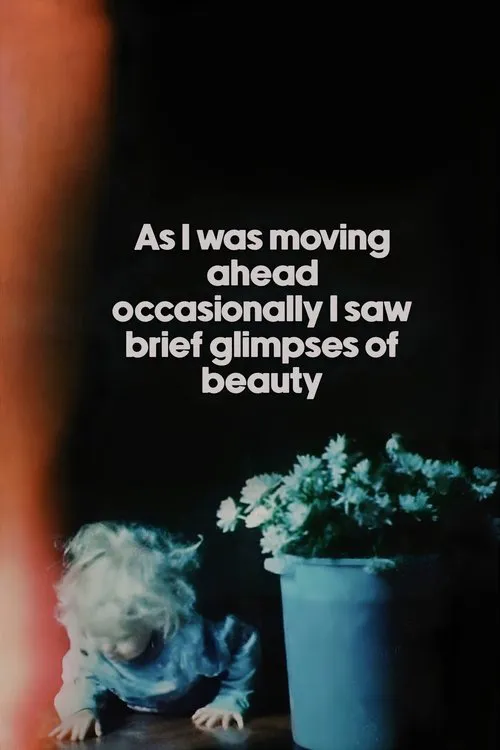As I Was Moving Ahead, Occasionally I Saw Brief Glimpses of Beauty

Plot
The film "As I Was Moving Ahead, Occasionally I Saw Brief Glimpses of Beauty" is a poignant and nostalgic cinematic tapestry woven from the private home movie footage of pioneering avant-garde filmmaker Jonas Mekas. Spanning over three decades, the compilation of intimate, unassuming shots captures the life, loves, and landscapes of Mekas' family and the bohemian community that surrounded him. Born in 1922 in Lithuanian to a family of modest means, Mekas would go on to become one of the leading figures of the American avant-garde movement. As a young man, Mekas fled Lithuania during World War II and eventually settled in Brooklyn, New York, where he would form lasting connections with the likes of John Cage, Allen Ginsberg, and Andy Warhol. The film begins with Mekas' childhood, depicted through hazy, Super 8 footage of lush green fields, idyllic summer picnics, and early mornings spent tending to his family's farm. These early scenes are infused with a quiet sense of simplicity, highlighting the beauty of rural life and the importance of family bonding. The use of home-made narrative voiceovers also gives a first-hand account from Mekas himself, allowing viewers to see aspects of his childhood as he saw them. As the 20th century progresses, Mekas' cinematic vision expands to encompass the artistic and countercultural landscapes of New York City in the 1960s. The film features fleeting glimpses of Allen Ginsberg and William S. Burroughs reciting poetry, the Velvet Underground performing live, and Warhol's Factory in all its Factory-ness: messy, frenetic, and bursting with creative energy. Mekas' relationships are also a central focus of the film, including his romance with his wife, Mary Mekas, who becomes a recurring figure throughout the documentary. Through tender, hand-held close-ups and domestic vignettes, the couple's affection and companionship are palpable. Shot largely on Super 8 and 16mm film, the visuals of "As I Was Moving Ahead" are characterized by their inherent intimacy and imperfection, offering a refreshingly genuine alternative to the sleek, polished aesthetics of mainstream cinema. At times, Mekas' footage can appear haphazard, with the director intentionally leaving some scenes in focus while others blur or fade to white. However, it's precisely this informal, often fragmented approach that lends the film its unique charm. Through such imperfections, Mekas subtly subverts traditional notions of cinematic storytelling, instead conjuring a sense of temporal continuity and experiential authenticity. The structure of the film, which eschews traditional chronology in favor of a more impressionistic, stream-of-consciousness approach, further reinforces this sense of temporal disjointedness. Scenes jump forward in time, occasionally revisiting earlier episodes from Mekas' life or jumping abruptly to new locations and characters. In this way, the film's non-linear structure serves as a wistful tribute to the fluidity and unpredictability of human experience. Throughout "As I Was Moving Ahead," Mekas offers poignant meditations on art, memory, love, and the passage of time. His is a world of quiet beauty and gentle contemplation, one that privileges observation and intimacy over spectacle and drama. Ultimately, this quietly revolutionary film stands as a testament to the power of personal vision and home filmmaking as a means of telling one's story. "As I Was Moving Ahead, Occasionally I Saw Brief Glimpses of Beauty" is a beautiful, moving, and thought-provoking tribute to the human condition, presented with unassuming elegance by Jonas Mekas himself.
Reviews
Recommendations




